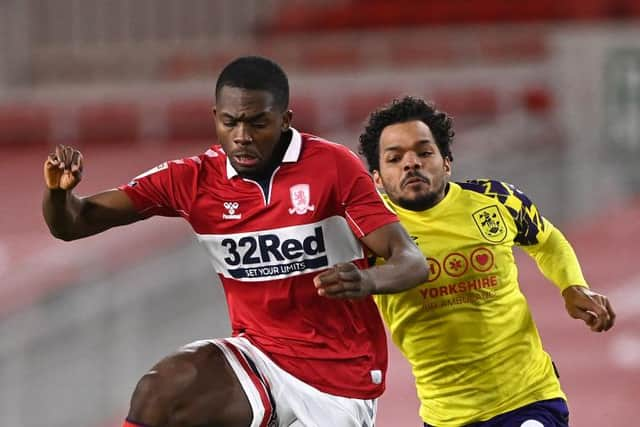The interesting statistics which suggest Middlesbrough are better with a back three as Neil Warnock considers options for Reading trip
and live on Freeview channel 276
The Teessiders were on a five-match winless run and drifting away from the play-off places as the season threatened to peter out.
Warnock received the reaction he was looking for as his side recorded a 2-1 win over Huddersfield at the Riverside, and while it’s too early to conclude Boro have overcome a mid-season blip, their first-half performance at least provided some timely encouragement.
Advertisement
Hide AdAdvertisement
Hide AdThere were only two alterations to the starting XI following the Derby defeat, yet the main talking point was Boro’s change of shape.


Warnock’s use of a back three and wing-backs at the start of the season served his side well while there was a lack of natural wingers in the squad.
The Boro boss was always keen to switch to a 4-3-3 system later in the season, though, and managed to do so for the seventh league game of the season away at Cardiff.
Since then, the back three has been used sparingly, like in December’s 2-1 win over Swansea when Warnock opted to match the opposition up.
Advertisement
Hide AdAdvertisement
Hide AdUp until the turn of the year, you couldn’t really argue with the change of approach as Boro were just a point outside the play-off places on January 2.
Yet after a run of just one win in seven matches, Boro’s performances had gone stale.
Against Derby the Teessiders looked vulnerable at the back, with defender Dael Fry sidelined due to a calf injury, and toothless up front.
Reverting to a back three against Huddersfield improved both ends of the pitch. So what approach should Boro take for the rest of the campaign?
Advertisement
Hide AdAdvertisement
Hide AdLong-term, when Yannick Bolasie has returned from injury and Nathaniel Mendez-Laing is upto speed, it is likely Warnock will revert to playing with a back four and natural wingers.
Still, the stats certainly make good reading for Boro when they have played with a three.
In the nine league games they have started with the wing-back system, Boro have lost just once, on the opening day at Watford, while winning five and drawing three.
As you’d expect, playing with an extra centre-back has provided more security in defence.
Advertisement
Hide AdAdvertisement
Hide AdBoro’s average expected goals against when they have played with a back three is 0.77, compared to 1.07 when they have played with a four.
At the other end, the Teessiders’ attack has been weakened when they have played with a back three, with their expected goals dropping from an average of 1.18 per game to 0.95.
Even so, Boro had netted just four goals in seven matches before the Huddersfield win and scored twice in a single game for the first time since their win at Nottingham Forest.
Duncan Watmore and Ashley Fletcher suggested they could form an effective partnership, with Neeskens Kebano showing promise in the No 10 position.
Advertisement
Hide AdAdvertisement
Hide AdPlaying with back three also appears to suit defenders Paddy McNair and Anfernee Dijksteel, giving them more license to step out with the ball from the back.
Boro have looked more secure playing a back four with Fry in the side, and the 23-year-old is expected to be fit for this weekend’s trip to Reading.
That will give Warnock more cause for thought ahead of an important fixture.